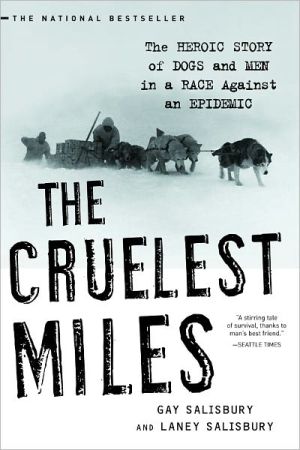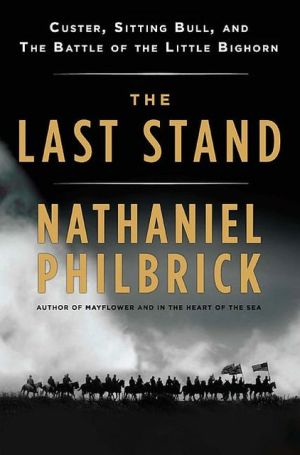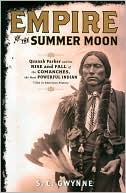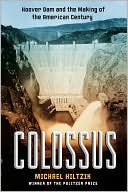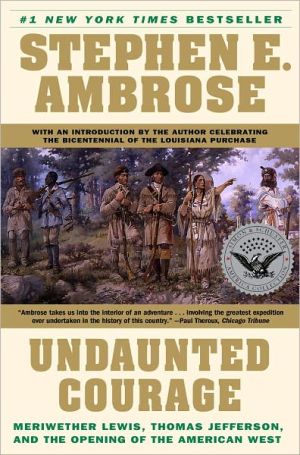The Cruelest Miles: The Heroic Story of Dogs and Men in a Race Against an Epidemic
"A stirring tale of survival, thanks to man's best friend . . . reflects a transcendent understanding and impeccable research."—Seattle Times\ In 1925, a deadly diphtheria epidemic swept through icebound Nome, Alaska. The life-saving serum was a thousand miles away, and a blizzard was brewing. Airplanes could not fly in such conditions: only the dogs could do it. Racing against death, twenty dog teams relayed the serum across the Alaskan wilderness as newspapers nationwide headlined the...
Search in google:
"A stirring tale of survival, thanks to man's best friend . . . reflects a transcendent understanding and impeccable research."—Seattle Times USA Today In the compelling The Cruelest Miles, the real story involved 20 mushers and hundreds of dogs. And the tale turns out to be far more inspiring and complicated than the animated 1995 children's movie. — Deidre Donahue
\ USA TodayIn the compelling The Cruelest Miles, the real story involved 20 mushers and hundreds of dogs. And the tale turns out to be far more inspiring and complicated than the animated 1995 children's movie. — Deidre Donahue\ \ \ \ \ Publishers Weekly"No one understands Alaska. [Officials in Washington] wire me to step over to Nome to look up a little matter, not realizing that it takes me 11 days to get there." That's the state's governor, Scott Bone, in 1922, three years before the distant, former Gold Rush outpost would need help combating an incipient diphtheria epidemic. As the Salisbury cousins amply demonstrate, upstate Alaska during winter was about as alien and forbidding as the moon-total isolation, endless night, bizarre acoustics, unreliably frozen rivers, and 60-below temperatures eventually causing both body and mind to shut down altogether. Under these circumstances, the 674-mile dogsled journey required to bring Nome the desperately needed serum seemed destined to fail, to put it mildly. The authors rightly frame the undertaking as the last gasp of an ancient technology before the impending arrival of air and road travel. As soon as news of the situation reached the "lower 48," it instantly became headline fodder for weeks. The book demonstrates the remarkable intimacy mushers develop with their lead dogs-only a handful of sled dogs have the character, courage, intelligence and will to be the lead dog. Especially heroic were renowned musher Leonhard Seppala and his lead dog, Balto, who undertook the treacherous and long final leg; the dog is immortalized by a statue in New York City's Central Park. The journey itself occupies the second half of the book; the authors judiciously flesh out the story with fascinating background information about Nome, the Gold Rush, dogsledding and Alaska. This is an elegantly written book, inspiring tremendous respect for the hardy mushers and their canine partners. (June 9) Forecast: Similar in tone and pull to tales like Seabiscuit or In the Heart of the Sea, this book has the potential to become a considerable seller, helped along by print ads, and author tour and media interviews. And who won't want to read a stirring tale of kids in peril and noble dogs? Copyright 2003 Reed Business Information.\ \ \ Forbes MagazineWell-researched, well-told tale of the heroic dogsled rescue of diphtheria-hit Nome, Alaska in 1925--a will-they-make-it-in-time drama that gripped the nation. The diphtheria serum Nome's doctor had requested was not delivered, and as winter ice set in, the area was cut off from the rest of the world. As fate would have it, diphtheria soon broke out. Known as "the strangler," diphtheria is especially fatal to children. The lifesaving serum had to travel a harrowing 674 miles over forbidding terrain via dogsled. (10 May 2004)\ —Steve Forbes\ \ \ \ \ KLIATTFans of true-life adventure, armchair explorers, and dog lovers will be first in line for this best-seller, a fast-paced saga of the 1925 mission of mercy to take life-saving diphtheria serum from the ice-free port of Seward, Alaska to the ice-locked port of Nome. This is a story of high adventure and heroism that will capture and hold the reader's attention to the very last page. Readers will quickly become caught up in this man vs. nature journey in which volunteer mushers and their dogs risk life and limb to relay the precious cargo over 600 miles to Nome. The authors vividly describe each harrowing leg of the expedition through the wilds of central Alaska. Positives far outweigh any minor negative criticisms. The story of this account is well researched, with 23 pages of source notes that are interesting and worthwhile in themselves. Also included are maps of the route, an extensive selected bibliography that includes websites, and a follow-up on the post-race lives of the major players. There are 16+ pages of interesting b/w photographs depicting life in Alaska in 1925. In addition, the reader will learn about the lives of the drivers and the qualities and training of sled dogs. Two of the dogs, Togo and Balto, are given special mention. After reading The Cruelest Miles, the articles on the sports pages about the Iditarod Sled Dog Race, which commemorates this mission, will take on a whole new meaning. KLIATT Codes: JSA—Recommended for junior and senior high school students, advanced students, and adults. 2003, Norton, 303p. illus. maps. notes. bibliog., Ages 12 to adult. \ —Prof. John E. Boyd\ \ \ \ \ Library JournalIsolated by geography and blizzard conditions in the winter of 1925 as the ravages of diphtheria threatened to take a deadly toll, Nome, AK, desperately needed help. The only way to get serum in was by dogsled, and this book tells the story of the courageous men and their canine companions who braved incredible adversity to save the town. The real heroes were the dogs, especially the team leaders, and their interaction with and interdependence on humans makes tales of the Iditarod pale by comparison. (A statue in New York's Central Park honors one of the dogs, Balto.) In a consistently gripping account that supplants the only other book on the saga, Kenneth Ungermann's The Race to Nome, the authors, cousins who both have a background in journalism, offer a carefully researched and well-written account of this event. This work is sure to appeal to a wide readership. [Previewed in Prepub Alert, LJ 2/1/03.]-Jim Casada, emeritus, Winthrop Univ., Rock Hill, SC Copyright 2003 Reed Business Information.\ \ \ \ \ School Library JournalAdult/High School-Many readers are familiar with the story of the dog Balto and the Nome, AK, diphtheria outbreak of 1925 and how 20 men and more than 200 dogs raced 674 miles against time and weather to save a community. The Salisburys provide a complete account of that feat-the first book in 40 years to do so-and, perhaps, introduce readers to two of the most crucial and courageous characters in this drama, Leonhard Seppala and his peerless lead dog, Togo. The authors supply a constant flow of interesting facts about Nome, the introduction of Siberian Huskies to Alaska, the beginnings of the Alaska airline industry, and why air delivery of the serum was discounted as an option. The heart of the book, however, is the run itself. Readers will be on tenterhooks as they follow the mushers and their dogs through minus-60-degree temperatures, unbroken trails, "ice fog," treacherous ice floes, gales, and blizzards, from the January day when Dr. Curtis Welsh realized that he faced an epidemic with only three nurses and an outdated supply of serum to that early morning less than five days later when Gunnar Kaasen and his Balto-led dogsled team arrived in Nome, exhausted and frostbitten, and carrying the new serum. At a time when a cost/benefit analysis is a major precursor to action, this book is a refreshing look at the lengths people and their devoted animals went to simply because, as one musher put it, "I wanted to help."-Dori DeSpain, Fairfax County Public Library, VA Copyright 2003 Reed Business Information.\ \ \ \ \ Kirkus ReviewsTwo cousins debut with an eloquent account of the famous 1925 dash by dog-sled teams to bring diphtheria serum to Nome, Alaska. Freelance journalist Laney Salisbury and former publishing executive Gay Salisbury seamlessly blend Alaska’s early history and an anthropological survey of Eskimo traditions with a page-turning chronicle of the race to Nome. Once the center of a gold rush, by December 1924 it was a small town on the Bering Sea shut off from the rest of the territory, its only harbor icebound from November until spring, its only line of communication the trails the dog teams used. In December, Dr. Curtis Welch noted an increasing number of illnesses among the local native population as well as the town’s children, suspected diphtheria, and became increasingly alarmed. New supplies of serum had failed to arrive, and he had no laboratory facilities. As children died, and the number of infected rose in late January 1925, Nome’s mayor placed the town under quarantine and issued a nationwide plea for serum. It was located in Anchorage and taken by rail to Nenana, where the first dog team picked it up and began the race across frozen seas and up icy mountains to complete the 674-mile journey to Nome. Both the weather and the terrain proved hostile and capricious: ice floes suddenly broke apart, blizzards blew up, and temperatures dropped. The writers vividly describe the race against time and nature, which attracted national attention, and provide well-rounded portraits of the team leaders and their dogs, especially Balto, the leader of the team that reached Nome first. His statue stands in New York’s Central Park. A riveting epic that memorably honors the heroes, both human and canine,who pushed themselves to the limit to save others. Author tour\ \
